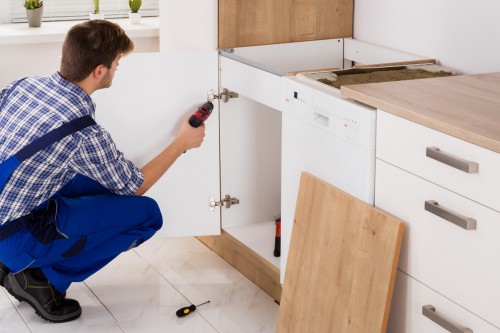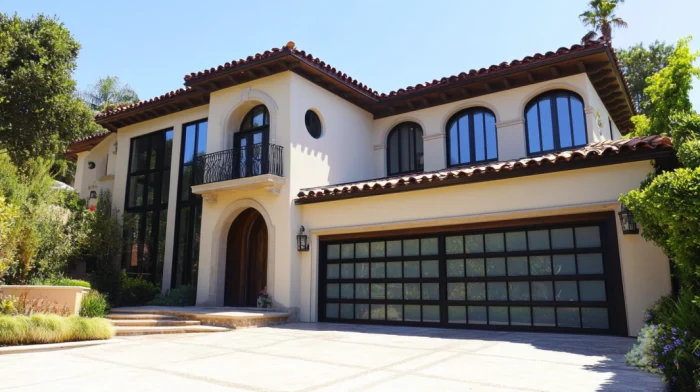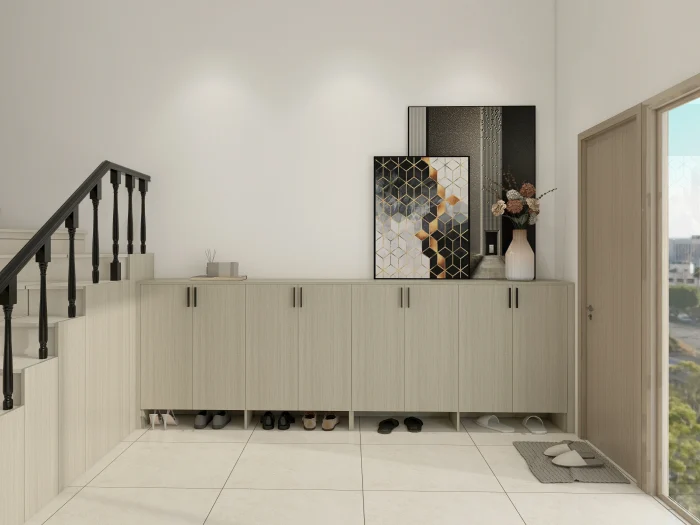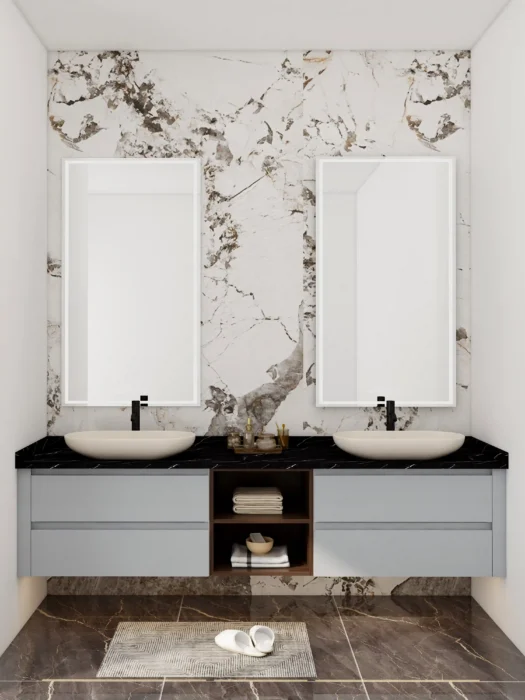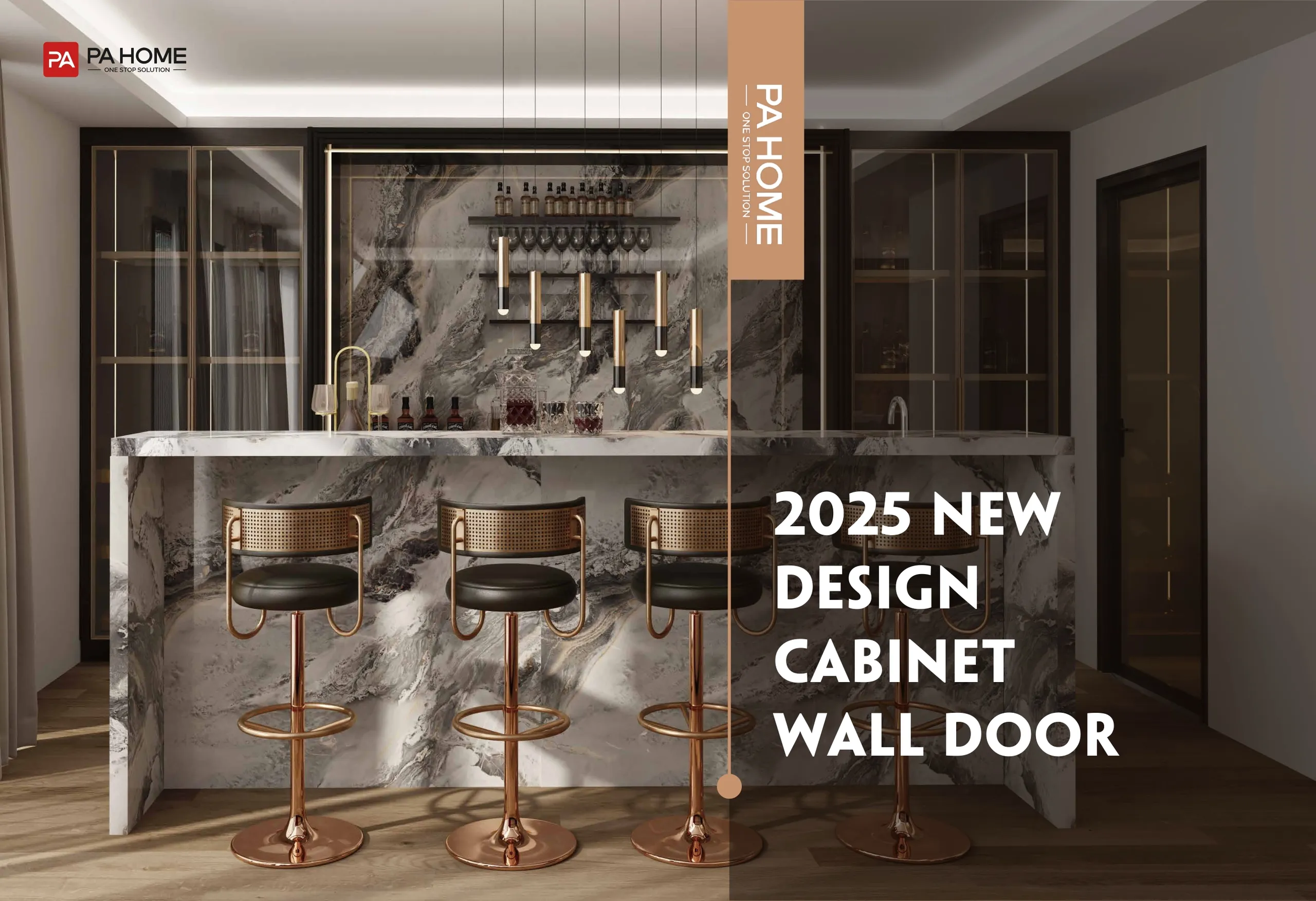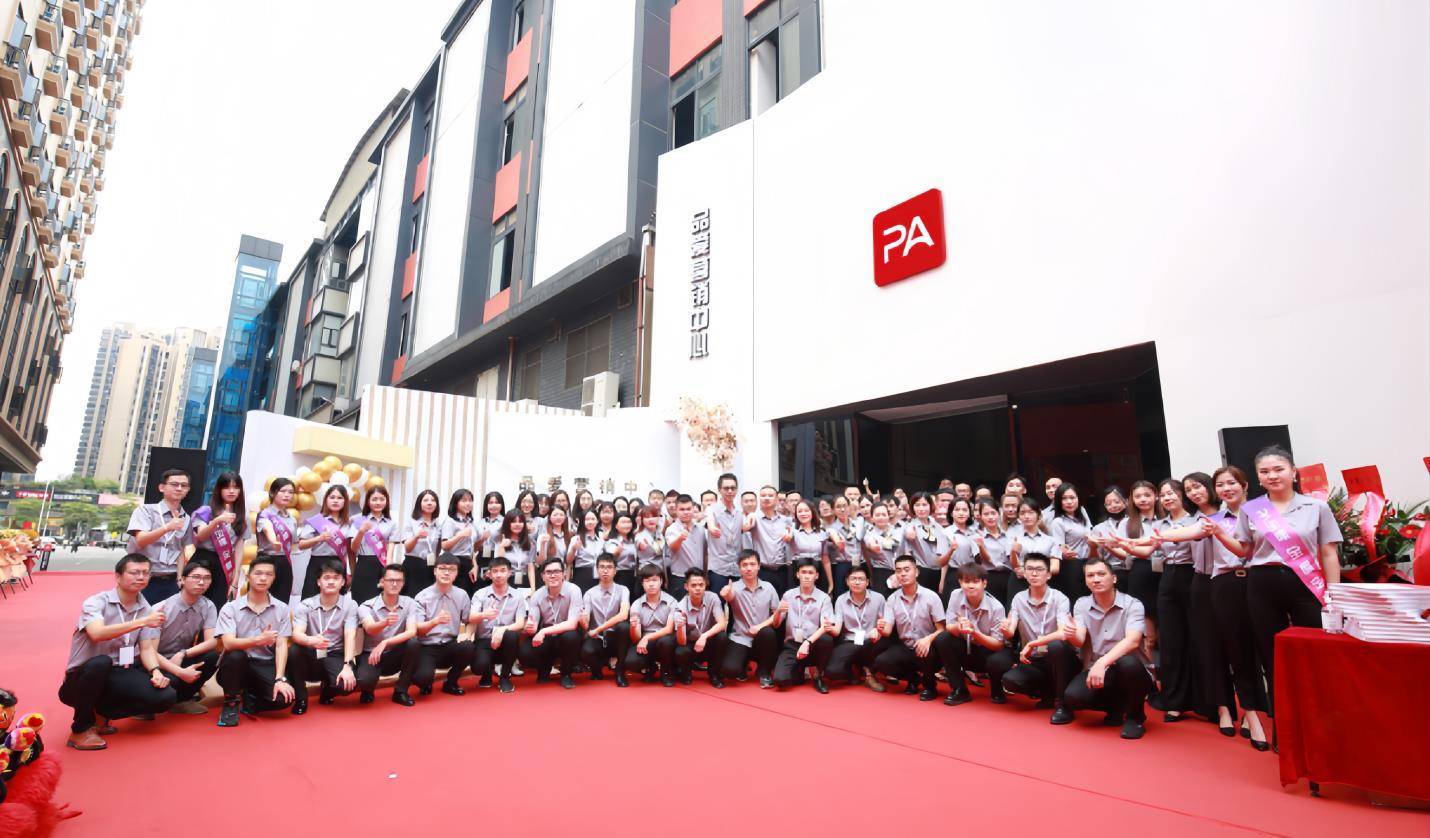INTELLIGENT CABINETRY
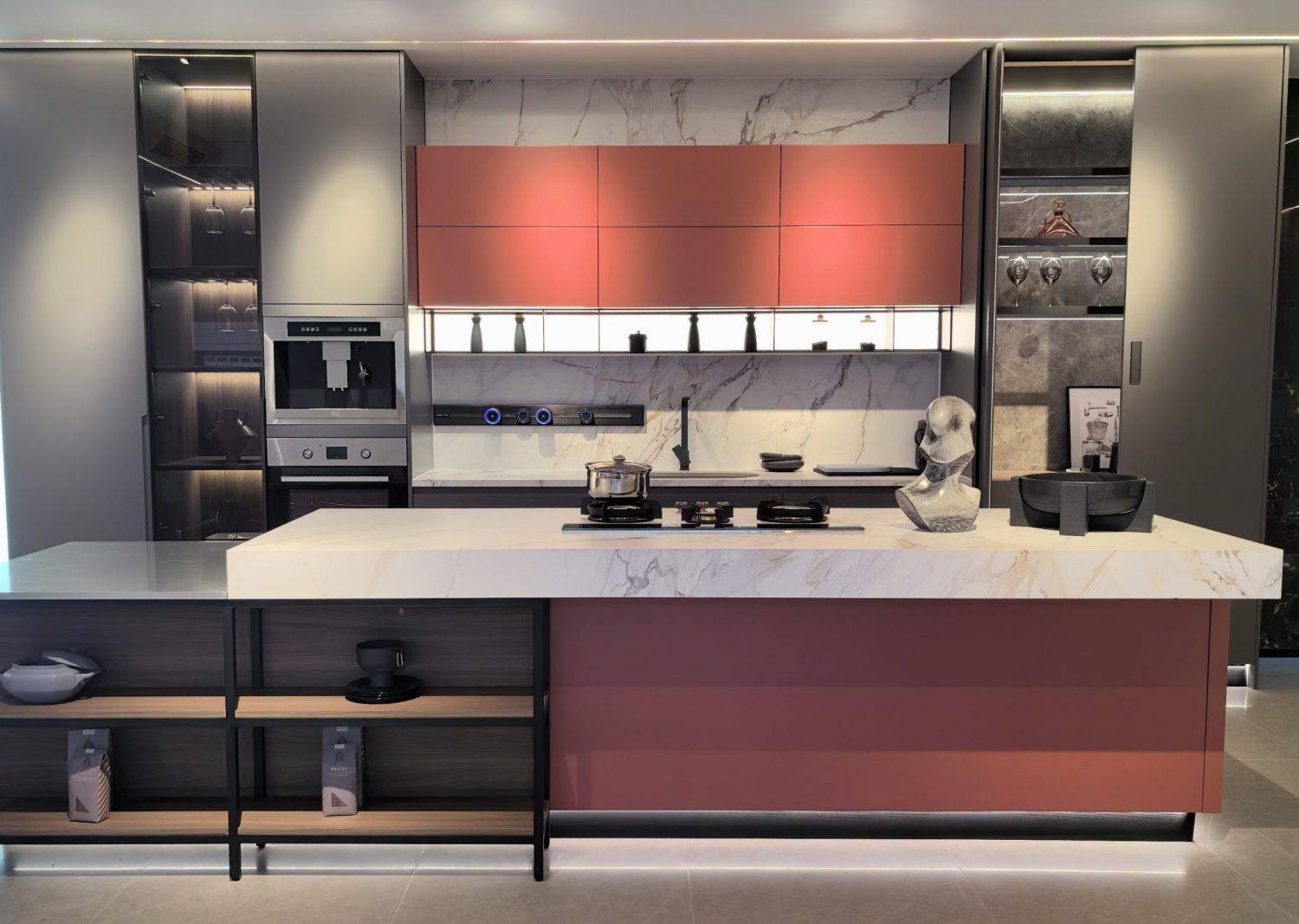
Design & Manufacturing: PA Kitchen
Benefits of Smart Technology in Cabinetry
When it comes to cabinetry, traditional cabinets may not always meet the demands of modern living. As a builder, project manager, architect, or interior designer you will be well aware of this. You are at the forefront of this revolution, reshaping traditional millwork and cabinetry not only for the home but also for businesses and organizations.
The benefits of technology in cabinets are many:
- Optimizing space utilization
- Enhancing safety and security
- Easy opening and closing
- Remembering shelf heights
- Easy monitoring with remote access and smart locks
Increased Functionality and Convenience

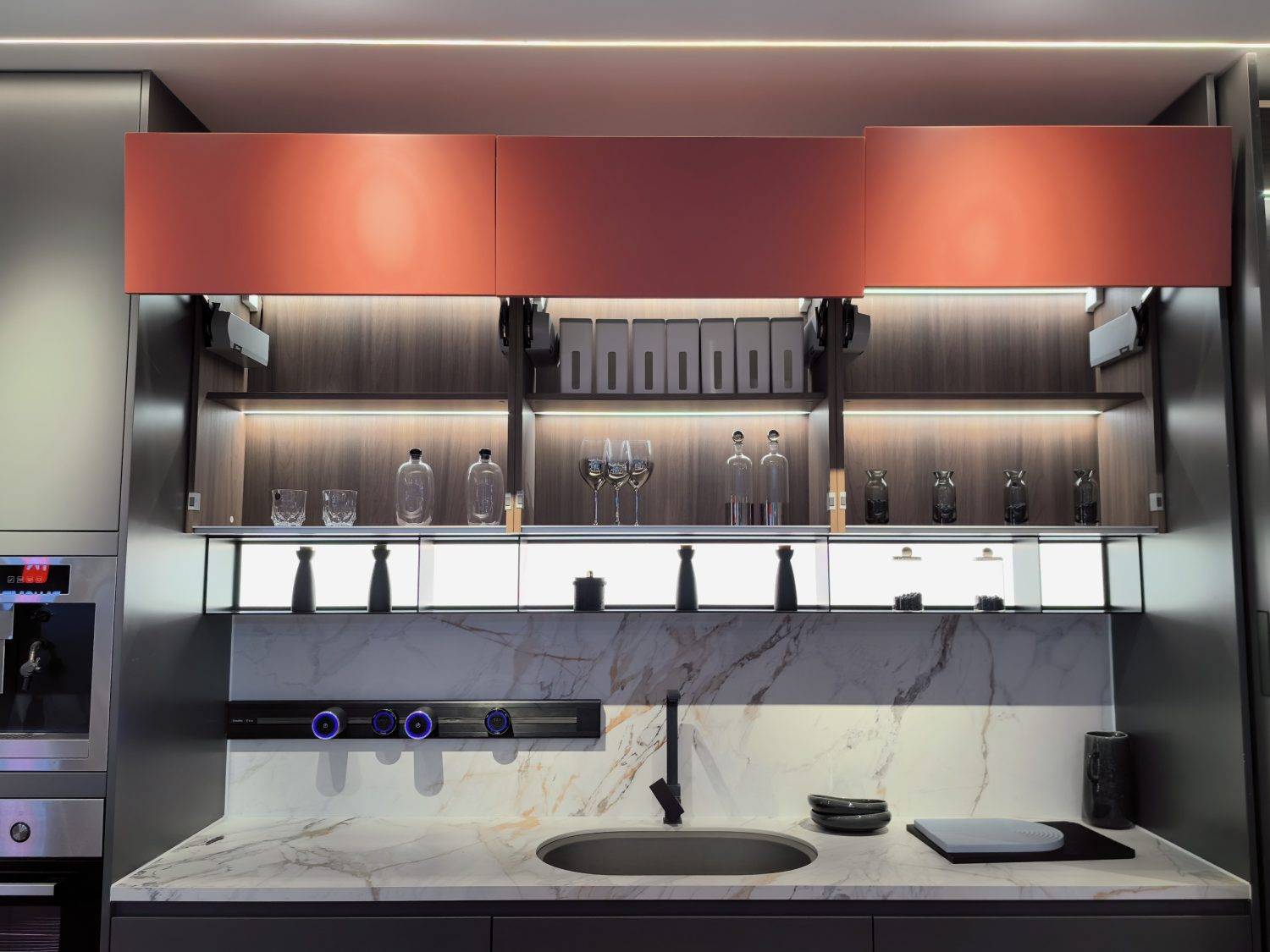
Source: Blum Servo Drive Easy-Open-and-Close Lift System.
Improved Organization and Space Utilization
One of the key advantages of smart technology in cabinetry is improved organization and space utilization. Smart cabinets offer customizable storage solutions that can be tailored to your client’s specific needs. From adjustable shelves and dividers to pull-out drawers and vertical storage, these cabinets give them the flexibility to organize their essentials in the most efficient way possible.
Smart cabinets can also feature inventory management systems. These systems can keep track of stored items and notify your client when certain items are running low or expiring soon. This eliminates the need for manual inventory management and ensures that you never run out of supplies or space … A must for commercial clients!
Touchless opening and closing
Cabinets equipped with sensors that detect hand gestures or proximity, allowing for hands-free operation.
Voice Command Controls
Cabinets that respond to voice commands to enable opening, closing, or adjusting settings without any physical contact.
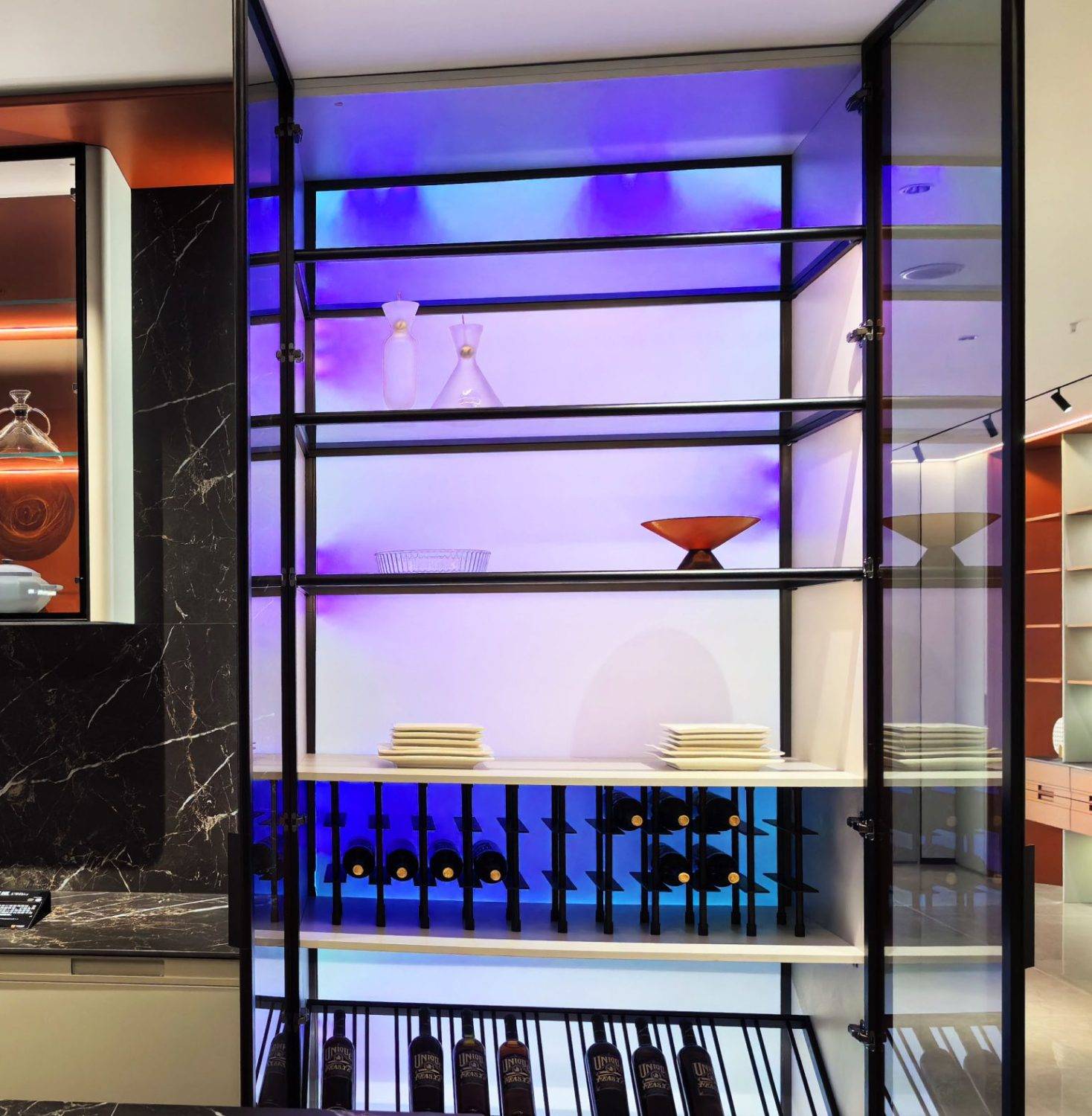
PA Kitchen Design – Wine Storage complete with smart mood lighting
Built-in LED lighting
that automatically illuminates a cabinet’s interior when opened, providing better visibility and reducing the need for additional lighting. Smart lighting controlled by smartphone apps or a voice-activated system like Amazon Alexa or Google Home allows for customizable lighting levels and color changes.
Adjustable shelves and dividers that can be easily repositioned to accommodate items of different sizes and shapes, maximizing storage space.
Smart locks provide an additional layer of security to keep kids away from harmful substances or tools, or to keep valuables safe.
Charging stations or pods that can be hidden inside a countertop, drawer, or cabinet. This will keep clutter to a minimum. At the same time, your devices remain charged and ready to use.

Countertop retractable wireless charging pod with USB A and C outlets
Hidden compartments, integrated into the cabinet design, provide discreet storage for valuable items or personal belongings. While nothing new, smart technology will make these easier to access.
Inventory Management Systems: cabinets equipped with sensors that monitor item levels and notify you when certain items are running low or need to be replenished. While very useful for the homeowner, imagine how helpful this feature will be for your commercial or organizational client!
Time and Cost Savings
Smart technology in cabinetry not only enhances convenience and functionality but also promotes energy efficiency and sustainability. By incorporating energy-efficient features such as LED lighting and motion sensors, these cabinets minimize energy waste. Lights automatically turn on when the cabinet is opened and turn off when it’s closed, ensuring that energy is only consumed when needed.
Additionally, smart cabinets offer the option to integrate renewable energy sources, such as solar power. This allows your client to further reduce their carbon footprint and thus contribute to a greener future. By embracing this technology, you are not only improving your client’s efficiency but also actively having them participate in sustainable practices.
Energy efficiency and sustainability
Choosing the right smart technology for cabinetry requires careful consideration of needs, budget, and available space. Here are some factors to keep in mind:

- Compatibility
Ensure that the smart technology you recommend is compatible with your client’s existing appliances and systems. This will ensure seamless integration and optimal functionality. - Budget
Your client’s budget will influence the options that fit within their financial constraints. Remember to review the long-term savings and benefits that smart technology can offer your client. - Space Constraints
Evaluate the available space and choose smart cabinets that maximize storage while complementing the overall design. Dimensions, layouts, and design styles will all be critical to making selections. - User-Friendly Interface
Recommend smart technology that is user-friendly and easy to operate for the average user. Commercial or organizational clients may need more complex systems that may require extensive learning or technical expertise and that need to integrate flawlessly with existing systems. - Reliability and Support – Recommend reputable technology providers and ensure they offer reliable products and excellent customer support. Read reviews, check for warranties, and seek recommendations from trusted sources. This, of course, goes without saying since your reputation as a designer, builder, or project manager depends on this as well.
Smart Technology Cabinet Features
When it comes to installing smart technology in cabinetry, it is essential to seek professional assistance. Smart cabinets require proper installation to ensure optimal performance and longevity. Professional installers have the expertise to integrate the technology seamlessly into a newly built or existing setup, avoiding any potential issues or complications.
Embracing the Future of Millwork with Smart Technology
Right Technology for Your Millwork
THE INTELLIGENT HOME
Smart Kitchens – Redefining Culinary Spaces
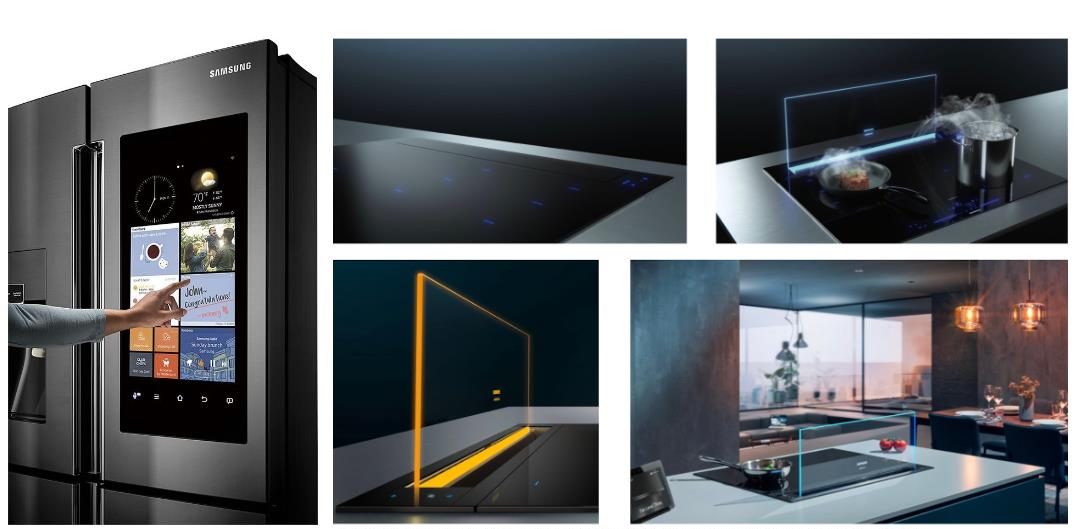
Siemens’ Smart Glassdraft Air Retractable Kitchen Ventilator with Mood Lighting Disappears into Worktop and Base Cabinetry
- Intelligent Storage: Cabinets equipped with sensors can detect a person’s approach, automatically opening to reveal neatly organized compartments. Adjustable shelving, controlled by touch-sensitive surfaces, adapts to the size of items stored inside, maximizing space efficiently.
- Connected Appliances: Smart appliances seamlessly integrated into cabinetry are becoming commonplace. Think of a refrigerator that suggests recipes based on its contents, or an oven that preheats itself as you approach, all controlled through a centralized kitchen display or a smartphone app. Or, how about a ventilation system in the form of a glass section that pops up out of the worktop and base cabinet behind the cooktop.
- Hidden Charging Stations: Millwork can incorporate discreet charging stations for devices, ensuring that the kitchen remains a hub for both culinary and digital activities.
Living Room Harmony – Seamless Integration of Technology
- Media Consoles: Cabinetry that not only accommodates your entertainment devices but also conceals cables and wires intelligently. Smart millwork can integrate with home automation systems to control lighting, audio, and visual components.
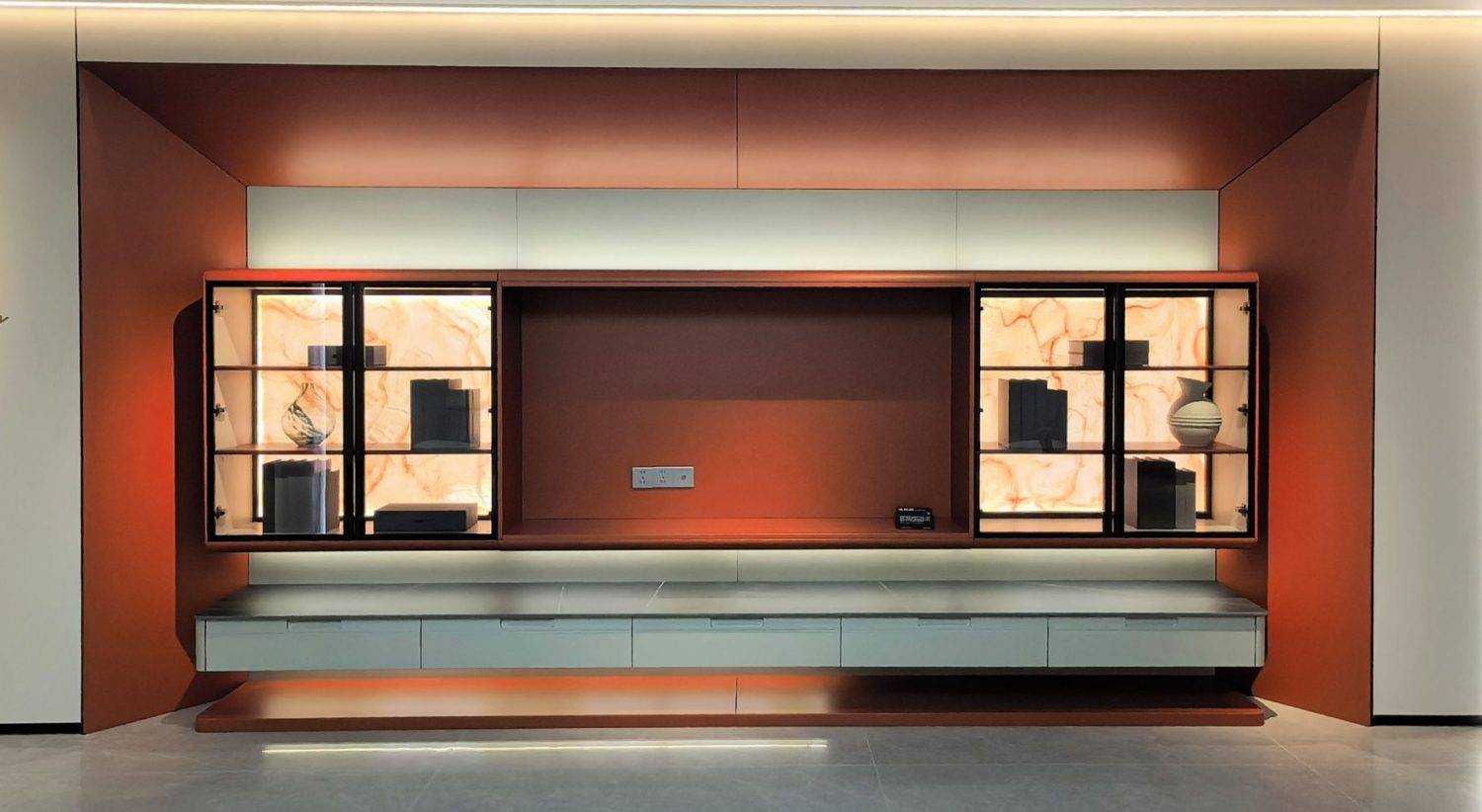
PA Kitchen: Media Console with all wiring and technology well hidden and out of sight
- Customizable Shelving: Adjustable shelving units that transform to accommodate different functions, from displaying art to creating a workspace, provide flexibility and adaptability to changing needs
- Digital Frames and Art Displays: Smart millwork in living rooms can incorporate digital frames that display rotating art or family photos, adding a dynamic and personalized touch to the space.
Connected Bathrooms-Elevating Daily Rituals
- Sensor-Activated Lighting: Bathrooms where the lights automatically adjust to your client’s preferred brightness. Cabinets with sensor-activated lighting provide a seamless and elegant solution for those late-night visits.
- Bluetooth-Enabled Cabinets: Integrated Bluetooth speakers in bathroom cabinets offer a spa-like atmosphere, allowing occupants to enjoy their favorite tunes while getting ready in the morning or winding down in the evening.
- Smart Mirrors: Mirrors are no longer just reflective surfaces. Smart mirrors can be equipped with touch controls that display weather updates, and calendar schedules. They can even provide skincare tips – the height of luxury! Some can even simulate natural lighting conditions for a more accurate reflection, making the application of makeup so much better.

Wardrobes of the Future – Intelligent Storage Solutions
- Automated Clothing Racks: Smart wardrobes can feature automated clothing racks that descend with a gesture, providing easy access to your entire wardrobe. Adjustable shelving and intelligent hangers ensure that every inch of space is utilized effectively.
- Digital Wardrobe Management: Apps linked to your wardrobe can suggest outfit combinations based on the weather, your schedule, or even current fashion trends. This not only streamlines the decision-making process but also adds an element of personal styling.
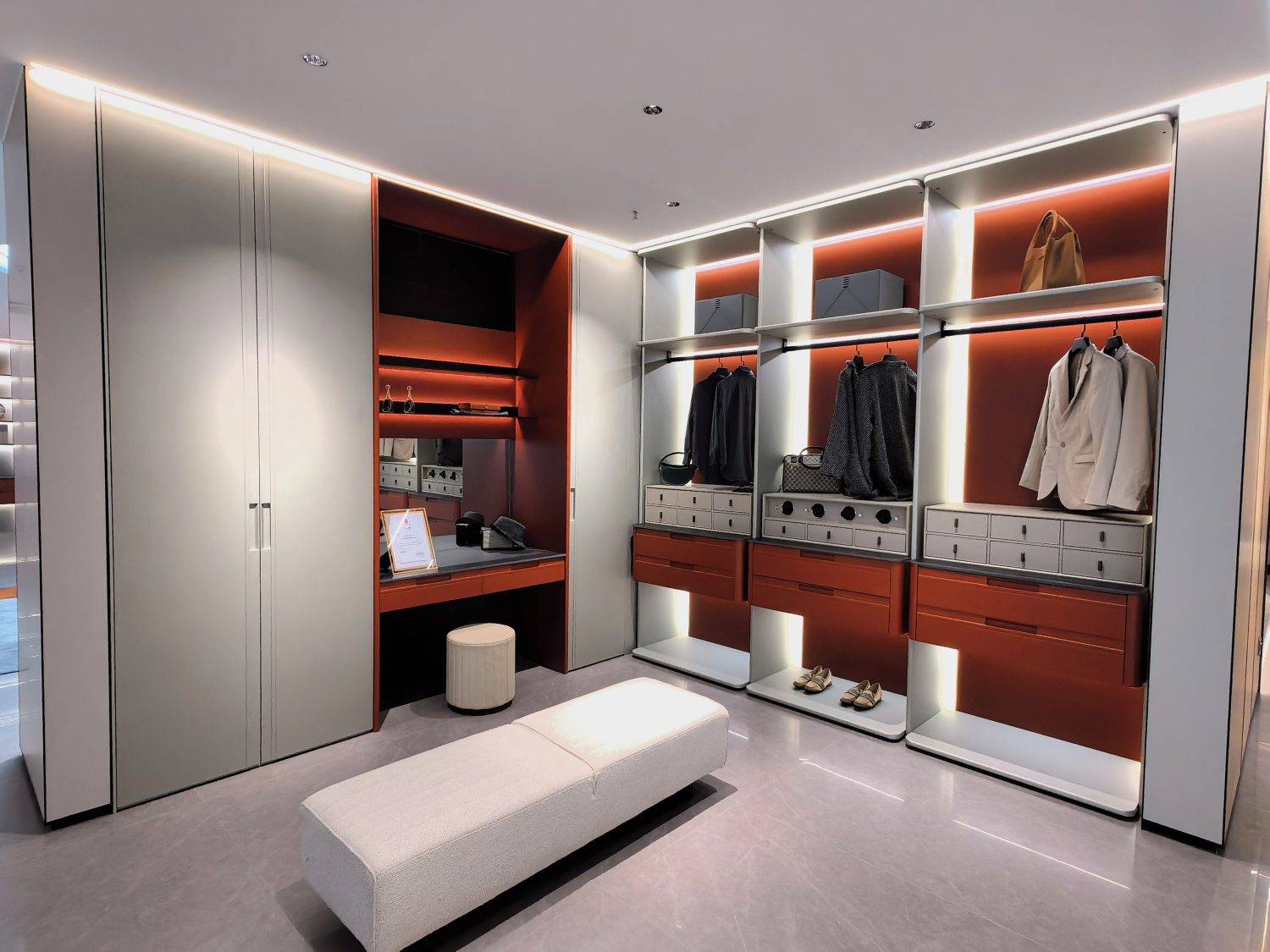
PA Kitchen Wardrobe showing smart watch winders simulating wrist movements to keep expensive
watches running and lubricated
- Climate-Controlled Closets: Some smart wardrobes even come equipped with climate control, protecting delicate fabrics and ensuring that your clothes remain in pristine condition
Home Office Efficiency: Intelligent Workspaces
- Ergonomic Desks: Smart desks with adjustable heights, built-in charging stations, and cable management systems cater to the needs of modern professionals. Some desks even remind you to take breaks to ensure a healthy work routine.
- Integrated Monitors and Connectivity: Cabinets can hide monitors and devices when not in use, maintaining a clean and uncluttered workspace while promoting productivity. Integrated connectivity solutions make it easy to switch between devices seamlessly.
- Personalized Lighting and Climate Control: Smart millwork can incorporate lighting solutions that adapt to the time of day, promoting a healthy daily rhythm. Climate control systems ensure that the home office remains comfortable throughout the day.

A Seamless Blend of Form and Function
You as an architect, interior designer, builder, or property manager are shaping the future of living spaces by integrating technology in ways that enhance our daily lives. As these innovations continue to evolve, the boundaries between traditional craftsmanship and cutting-edge technology blur. Homes and working environments become not only aesthetically pleasing but also intelligent, intuitive, and tailored to the unique needs of their occupants.

Author: Jessica Eken
After a couple of decades as an accomplished interior architect, Jessica turned to writing for the B2B and B2C home industries.
She can be reached at www.dancingzebras.com.
Tech-infused cabinetry refers to kitchen or storage cabinets integrated with advanced technologies. These might include automated opening mechanisms, built-in charging stations, smart lighting, and other innovations designed to enhance convenience and functionality.
Tech-infused cabinetry can improve wellbeing by reducing physical strain with features like easy-access designs, enhancing safety with automated lighting and alert systems, and promoting a clutter-free, organized environment that contributes to mental wellbeing.
Yes, tech-infused cabinets are highly customizable. Clients can choose from a variety of features, materials, and designs to meet their specific needs and preferences, ensuring that their cabinetry is both functional and aesthetically pleasing.
Yes, tech-infused cabinetry is designed to be user-friendly for all ages. Features like lowerable shelves and voice-activated systems make these cabinets accessible and convenient for children, adults, and the elderly alike.
Absolutely. Many tech-infused cabinets are equipped with LED lighting and energy-efficient systems, reducing electricity usage. Automated systems can also ensure lights and other electronic components are off when not in use.
Safety features can include motion-sensor lighting, which prevents accidents in the dark, soft-close doors to prevent finger pinching, and alert systems that notify owners of open drawers or cabinets.

